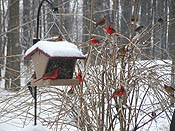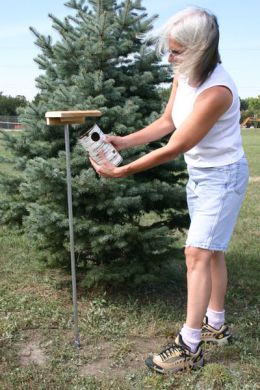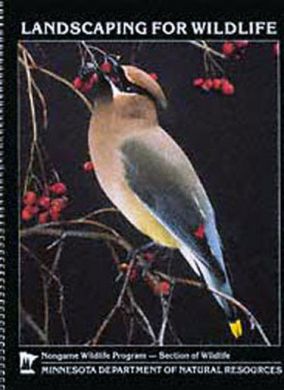Blog - General
Daves March Bird Chatter for 2016
The 2016 spring bird migration began in January with eagles and some hawks. Mild days in early February freed area lakes from winter’s icy grip. This allowed many geese and ducks to start their move north. In February thousands of Snow Geese were reported at Squaw Creek National Wildlife Refuge along the Missouri River. Since then tens of thousands of Snow Geese have been spotted flying over Lincoln moving from the Missouri River to Nebraska’s Central Platte River Valley and the Rain Water Basin where it is common for millions of birds to congregate. The Platte River has ample water for the 600,000 Sandhill Cranes migrating through, but the wetlands and lagoons in the Rain Water Basin have been severely depleted from last summer’s drought. This leads to overcrowding by millions of ducks and geese posing a threat of a die-off from avian disease. Hopefully late winter snows which are common in Nebraska will help alleviate any problems.
February 2016 was a good month for viewing Bald Eagles. Many will remain in Nebraska to nest. Others only pass through stopping to feed on winter fish kills and loaf in the trees during the day. Those that continue north will follow the Snow Geese preying on the ones that are sick or injured. Lincoln’s resident Bald Eagles have constructed a new nest and the male and female have been spotted on it. In their seventh breeding season on the edge of the city these eagles probably remained close to their nesting site all winter since Salt and Little Salt Creeks rarely freeze providing a reliable food source.
In February American Robins return from their southern wintering grounds in large numbers. They will be joined by Red-winged Blackbirds, Meadowlarks, bluebirds and Common Grackles, all which arrive early in the month of March. We will also see a variety of native woodland sparrows. One to watch for is the Harris’ Sparrow. Sandhill Cranes will be on their annual pilgrimage through Nebraska, and Prairie Chickens will become active on the booming grounds called “leks”. By months end we will see the return of Tree Swallows and Purple Martins. It won’t be long and Turkey Vultures will be soaring overhead. These majestic birds can glide for hours without ever flapping a wing. They are my harbinger of spring arriving closer to March 20th than the American Robin.
As we move through March the spring bird migration will gain momentum. It is a very busy time in the avian calendar and an exciting time to go birding. Birds will be in their breeding plumage during the spring migration making them much easier to identify. They will also be more vocal so with a good ear you can identify them as their songs of courtship fill the air. By April many songbirds and shorebirds will be arriving. While some will be passing through headed to the northern Boreal Forests in Canada and beyond others will remain to nest and raise families across the Great Plaines. In Wild Bird Habitat’s April newsletter we’ll tell you what to look for and where some good birding locations are. It’s not hard so see 100 or more species of birds during spring migration. All one has to do is look.

Here we are talking about the spring bird migration but winter may be a long way from over. March can produce some significant snows across the Central Great Plains and Midwest. These storms can create problems for the early migrants to our area. If a sudden snow storm erupts during March it can be difficult for all birds as vital food sources can quickly become inaccessible. All we can do for many of these birds is hope for the best. For the birds in our backyards it can be as easy as keeping the feeders filled, supplying some grit for digestion, and open water to prevent dehydration and keep clean.
Many of us have enjoyed winter visitors from the north this year. In fact many winter birds called irruptive species such as; Pine Siskin, Red-breasted Nuthatches, Red Crossbills and White-winged Crossbills and Common Redpolls can show up at bird feeders at anytime. During the Great Backyard Bird Count we saw large groups of Pine Siskin at the Pioneers Park Nature Center. Purple Finch from the North Country are a treat to see. Often times House Finch are mistaken for them but when you do see a Purple Finch you’ll know it. When these birds appear in our area during the winter months it is a sign food resources to the north are low.
Goldfinches have been abundant at Nyjer thistle feeders and have really taken to feeding on Nutra-Safflower seed and those numbers will soon increase. We have been enjoying the Northern population of Goldfinch over the winter months. Many of our resident Goldfinch drift south for the winter but will be returning this month. It is easy to double the numbers of Goldfinches at the feeders by mid-March This is also when the olive drab feathers of the males will be replaced by bright canary yellow feathers. At first the male Goldfinch will appear blotchy until the full beauty of his breeding plumage is complete. March through early May is considered “finch season” so now is a good time to add another thistle feeder to avoid over-crowding. It will be May before the northern populations follow the dandelion bloom back to their breeding territories leaving us with our resident Goldfinches
Suet will remain in high demand over the coming months, even more so than during the winter. In the past suet was considered to be a winter food product for woodpeckers, nuthatches, Chickadees, and an occasional Carolina Wren. However, heading into the nesting season these birds will consume more suet than all winter long. Roughly about 30% more between now and late summer. The animal protein provides them with the extra energy needed to defend a territory, court a mate, and raise a family. Often during the summer months you’ll see the Downy Woodpecker bring their young to the suet feeder for a high energy treat. So if you’ve never tried feeding suet, now is a great time to start. I prefer the upside-down suet log with the Attractor suet plugs. This makes it extremely difficult for European Starlings to feed. Other popular suet feeders I like to use are the caged suet feeders which prevent squirrels from raiding the suet. We have a good variety of suet feeders at Wild Bird Habitat and the details to help you get the most out of it. Give it a try. You’ll be glad you did.
The birds have been quiet all winter with the exception of the jays barking out their calls to let all know they have arrived once again at the feeders and the finch that continuously squabble over which perch is theirs. Most other birds just give a few chirps and peeps. But March is the time when singing is the onset of courtship and pair bonding, and the songs mean spring to the ear even if the eyes still see white. The Northern Cardinal seems to be the first, singing as early as mid-January followed by the Chickadees. The intensity and frequency will pick up along with the mating calls of many other birds. In fact today I heard my first Mourning Dove. This singing is a true harbinger of spring. It reminds us we have endured another winter on the Great Plains and that we are in the home stretch.

March is also the time to get the nest boxes cleaned out and checked for needed repairs. Place a fresh 2 inch layer of wood shaving in the bottom of Wood Duck nest boxes. Most others just make sure no mice have wintered over in them and that they are cleaned and ready to go by the middle of the month. If the weather warms and is sunny Chickadees, along with some bluebirds, will begin checking nest boxes and start building a nest. Woodpeckers are early nesters as well.
Oh yes! Spring brings not only the highly anticipated return of our favorite summer birds, but a few we could do without, primarily the Common Grackle. We have a variety of bird feeders and great tips at Wild Bird habitat on how to deal with these overpowering birds and still have a great summer bird feeding experience.
It seems as if were just yesterday I was reminding everyone to keep your binoculars and a field guide handy to watch birds during the fall migration and already I am repeating that reminder for the spring migration. Bird migrations are a planetary phenomenon. They travel hundreds if not thousands of miles to their breeding grounds. The Arctic Tern is a long distant migrant traveling 24,000 miles round trip from the Antarctic to the Arctic and back. Once birds reach their breeding ground all effort is put into nesting and raising a family. As soon as that has been accomplished many start their long trek back south.
I encourage everyone as the winter of 2013 subsides to get out and enjoy the changing of the seasons from beginning to end. Watch and listen to the birds. Watch your backyard closely for any new or migrating birds. Take a walk in a natural area such as the Pioneers Park Nature Center looking for these spring arrivals. Add another bird feeder, maybe a different style. Find out what cavity nesting birds are in your area or attracted to your habitat and put up a bird house for them. Start planning a new water feature, maybe a small recirculating pond for the birds. Not only will the sound of moving water attract more birds, you can operate them all winter providing a great water source.

March is a good time to begin thinking about adding some wildlife habitat to your yard for the birds. The Wild Bird Habitat Stores offer the book “Landscaping for Wildlife” by Carroll Henderson, and I recommend it highly. Finke Gardens in Lincoln on North 66th Street have a large selection of wildlife plantings to create a natural area for birds. If you were to plant just one shrub to provide food or shelter each year, before you know it you’ll have wonderful habitat for birds, and attract many more than just those visiting your feeders. It will also add value to your property.
So enjoy the spring bird migration. Take a bird class, a walk through a woodland or visit a lake or wetland. You can’t help but be inspired by what you’ll see and witness. Go out and spend the day viewing the Sandhill Cranes Sign up for a birding trip or birding festival. Just ask us at Wild Bird Habitat and we’ll keep you updated on the birding hotspots and all the spring birding events and activities. And good birding to all.
